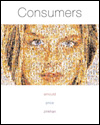We began with a discussion of culture as shared templates for behavior and
interpretation. We noted that although we hardly ever notice our own culture,
culture supplies important boundaries on our behavior. Culture is adaptive and
dynamic and it is patterned. We learn culture either by growing up in it as
natives or through the process of acculturation. Although there is substantial intracultural variability it is possible
to identify core values that seem to define a culture. Many different approaches
to measuring cultural values have been developed. The most famous is the Hofstede's
worker values. We also described the Rokeach Value Survey (RVS), and the List
of Values (LOVS), all of which have been related to some consumer behaviors.
In addition to values, myths, symbols and rituals also help to define culture.
Important consumer behaviors in any society can be better understood by referencing
shared myths and symbolic meanings. Consumer goods often become core symbols
in a society. Consumer rituals are an important aspect of how cultures reinforce
blueprints for action and interpretation. We discussed several different types
of rituals and the use of ritual objects (often consumer products) that accompany
these rituals. Finally, the globalization of consumer culture seems to be producing
a variety of creolized cultural forms expressed through consumer goods and behaviors.
One might even say that some consumers are consuming culture. |




 2002 McGraw-Hill Higher Education
2002 McGraw-Hill Higher Education


 2002 McGraw-Hill Higher Education
2002 McGraw-Hill Higher Education